When was the last time you leapfrogged from your couch when you heard about the latest ‘in thing’ in gaming technology that will take the ‘sport’ to unimaginable heights. When TRON released in 1982 and someone said you could enter a virtual world a la movie, you would have thought the person has lost his marbles and is just ‘high’ on the movie. But, today with technological advances available in the area of virtual reality and hardware available to deliver that experience, it is partially possible to achieve that deep connect, where the character in the game that you play could actually be you.
There were a few virtual reality (VR) headsets which were released in the era where console gaming – particularly Nintendo – was on the rise, but much of it was too outlandish to be accepted by the audience and also the products that the companies introduced were ‘not consumer ready’ and were heavily criticised by the industry and the users alike.
Products like Sega Genesis VR, Virtual Boy, Atari Jaguar VR headset were released around in 1990s but failed to live up to the expectations to become the future of gaming and were dubbed as one of the worst selling video game consoles of all times.
Virtual Boy was released in 1995 only in North America and was called back within a year in sales due to lack of sales and eventually not released in other markets. Sega Genesis VR and Atari Jaguar VR never saw the light of the day for the general consumers and only got to the prototype stage. Four games were built for the Sega VR and one for the Atari VR. Today only two Atari VRs are left in existence and one of them crept up last year on eBay, demanding a whopping $14,500.
Coming back to the present we have several companies working on the virtual reality headsets and trying to give you an immersive experience games and one of the most exciting ones to start the new age of VR is Oculus VR.
Oculus VR – VR industry’s poster boy

When Palmer Luckey looked around for the best VR headset to experience immersive gaming, he felt that the guys in the business had still not managed to get their head around the technology. Thus, at the tender age of 20 he decided he had enough of this and wanted to build one of his own. Having already worked at the Institute of Creative Technologies at the University of Southern California as a designer for head mounted display (HMDs), he was working on a number of modified HMDs and already made his first prototype in 2011.
With Brendan Iribe and engineers from Scaleform (middleware provider for the video game industry), Palmer started working on a HMD device and went for a crowdfunding through Kickstarter in September 2012. A target for $250,000 was set which was achieved in the first four hours of the campaign. Till the Kickstarter campaign finished the project had collected more than $2 million. The person who pledged $300 to the project would get the first prototype of the Oculus Rift.
By December 2012, the first prototype was delivered to Kickstarter backers and the device was bundled with DOOM 3: BGF Edition. The second prototype was ready for shipping to the developers from July 2014 and had better resolution (960×1080 per eye), a weight drop and omission of an external box than the first prototype. The consumer version of Oculus Rift will be out later this year, where the company promises even higher resolution than the second prototype, a higher refresh rate, a low persistence AMOLED display and a full 360 degree tracking.
In March 2014, the company was acquired for a whopping $2 billion by Facebook and this made the world stand and take notice of Oculus’ intentions of breathing life into this game changing technology.
Today, at least more than a dozen games are already developed for the Oculus with big titles like Skyrim, Half-Life 2, Team Fortress, Left 4 Dead and Portal.
With John Carmack and Micheal Abrash joining Oculus as Chief Technology Officer and Chief Scientist respectively, the company is marching towards creating what could change the way the world plays games.
Currently working on its Crescent Bay prototype, Oculus claims to have built a VR headset that does not give queasy feeling after the play is over. Along with the audio tech, which changes with the angle and the orientation, this helps increase the immersive experience and this is what Oculus wants the consumers. With already so much achieved in the VR space in such a short span Oculus has all the eyeballs glued to it and industry is waiting for the consumer version to hit the market soon.
Samsung bringing VR to mobile phones
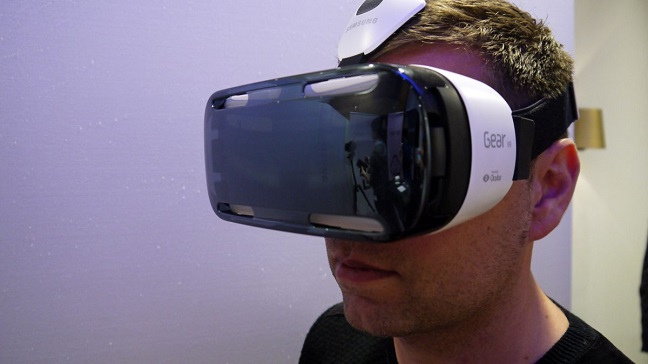
Samsung Gear VR is another HMD that Oculus is developing for Samsung for their Gear line of wearable products and will only be compatible with their Galaxy phones. First displayed in September 2014, it had Galaxy Note 4 and unlike Oculus Rift does not need any external display device for interfacing. It is a portable device and has buttons on sides for volume and back button.
Samsung has started making content for Gear VR and promises to provide more as they move forward. The VR currently is only available in the US market as of now. More developers are in the fray to develop content for mobile VR.
Sony – Building VR for the console experience
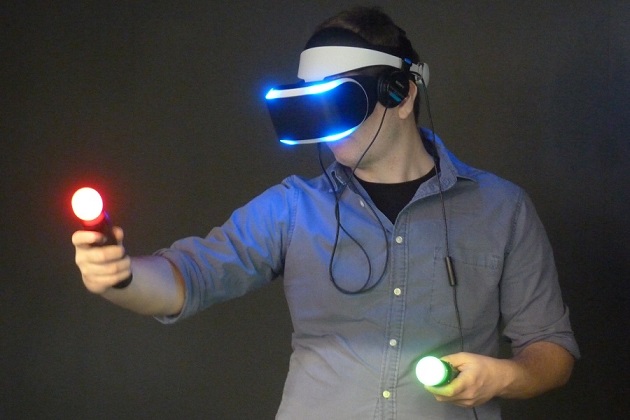
Sony which previously designed devices like HMZ-T1, T2 and T3, (a personal 3D viewer headset which provides a complete cinematic experience directly in front of your eyes) a new VR device titled Project Morpheus to be fully functional with PlayStation 4 and PS Vita.
First showcased at Game Developers Conference (GDC) 2014, the device contains full HD display per eye, 90 degree of field of view and a 360 degree of full head tracking that works with PlayStation Camera.
Release date for the consumer is not yet known but a lot of games have already developed a support for the Sony HMD. Games like Among the Sleep, Eve Valkyrie, Thief and some more are available to experience the power of Morpheus
Google’s Mega Leap into VR
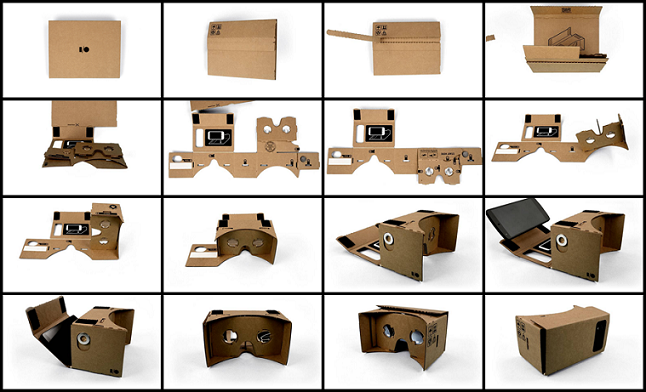
Google too is making VR headsets but not really shelling out big bucks on it. It introduced Google Cardboard at a Google I/O 2014 conference with an app supporting it. Google Cardboard is a fold-out cardboard smartphone mount that comes with lenses, a magnet, a piece of hook-and-loop fastener and a rubber band and when held against the face, affords a virtual reality experience
Google is also working on a 3D motion device that creates a 3D model of the environment with the help of two back cameras and infrared depth sensors. Titled Project Tango, this project is being worked by Google’s Advanced Technology and Projetcs group (ATAP). Google has tied up with companies like Nvidia and Epic Games to provide different gaming experience.
A mystery company Magic Leap which was recently brought to the forefront on receiving funding of close to $500 million led by Google Inc, works on a more realistic 3D experience which the company claims will be anything else than that’s out there.
The company will weave 3D sculptures in the real world with the combination of their proprietary hardware, software and firmware.
Razer – Bringing open source to VR
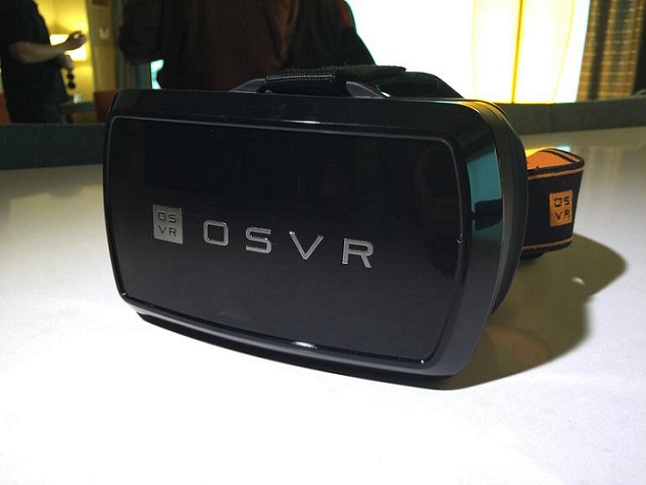
Since every major player is betting big on VR doing really well for the gaming industry. Razer too has come up with a VR headset that will have open source nature and called Open Source Virtual Reality (OSVR). It has a 1920 x 1080 screen, head-tracking, and a blocky shape. Its open source nature allows developers to build apps on top of any operating system (which include Windows, Linux or Android)
It also supports key game engines such as Unity and Unreal Engine 4, as well as device plugins from the likes of Bosch and Razer, along with middleware from companies such as Sixense and LeapMotion. It’s built for wild experimentation and customisation.
It is priced at $199, a $150 cheaper than Oculus’s current devkit and will be available from June this year.
Accessories to provide deeper VR experience
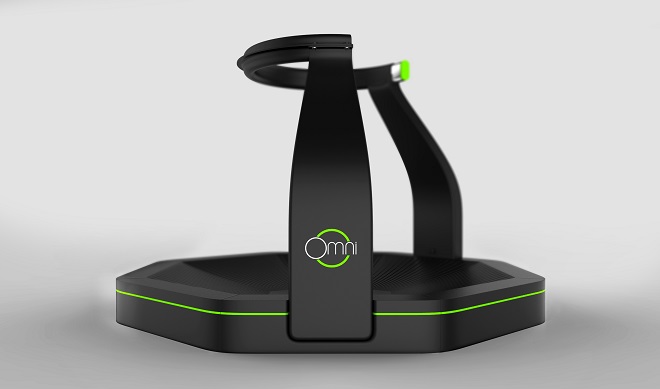
With HMDs roaring for the immersive experience and gaming moving in another dimension, different companies are developing products to support these HMDs. Products like Virtuix Omni and Cyberith Virtualizer allow users to move around freely in the virtual world and perform actions like walk, run, crouch on the low friction treadmills.
Other products like StrikerVR and Sixense STEM (developers of Razer Hydra) provide users with physical controllers which can act as guns and swords inside the virtual world and provide that extra realism. StrikerVR also provides recoils which give you an experience of a real gun without shooting real bullets.
Future – What can you expect
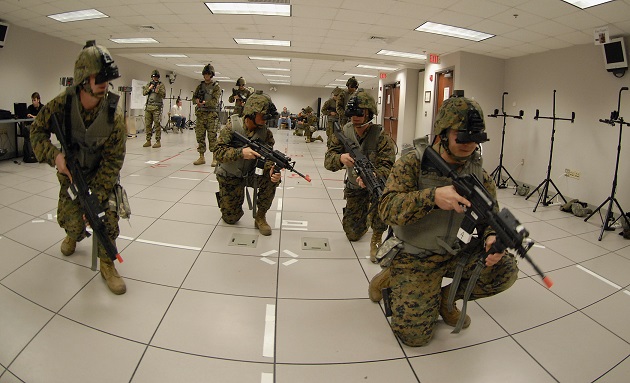
According to John Carmack, ‘The future of VR is bright’. A lot of people have placed high bets on VR doing well and changing the course of how one plays games. With a lot more interest from industry giants and the products showing promise on the game front, the VR’s will not only be limited to the gaming industry but also have interest from other industries like education, medicine and military as well. With the right mix of technology and content the VR’s will be the thing people will be looking forward to next after the consoles. All said and done, the devices will face a similar hurdle of high pricing in the country, like the consoles, which too have suffered due to the same issue that continue till date.
